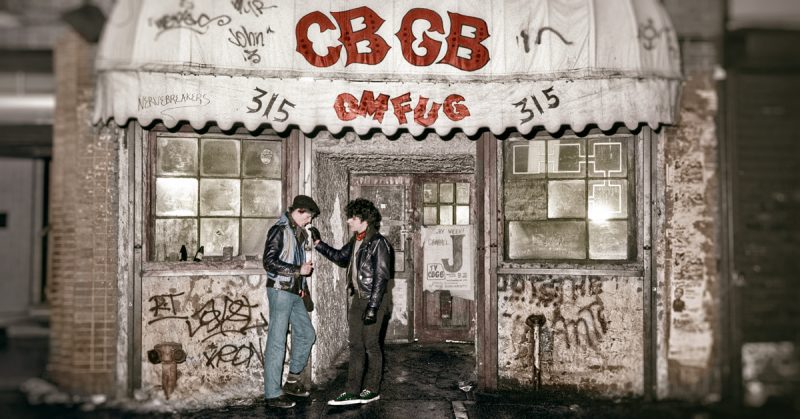For a time, kids and young adults who wanted to be “punk rock” and “edgy” could be seen wearing T-shirts with the letters “CBGB/omfug” on them, long after punk rock had really died, but the fact that many years after the reason for the T-shirts was gone is testament to the power of one little place and one man.
CBGB’s was the brain-child of Hilly Kristal, and in the 1970s and 1980s, if you wanted to see the next wave in music, this little hole in the wall in the Bowery in New York City was the place to see it.
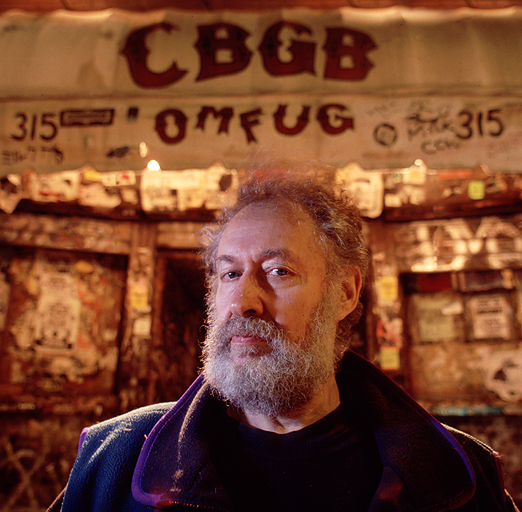
The Bowery was the perfect setting for the venue – seedy, run-down and notorious for its winos and crime even in the best of times. In the years when New York City was a den of crime, heroin addiction and about to literally go broke at any moment, CBGB’s fit right in.
Hilly was a Jewish kid from New Jersey who, to the lasting aggravation of his parents, got involved in popular music from an early age. He was born in 1931 and grew up just when rock was in its infancy.
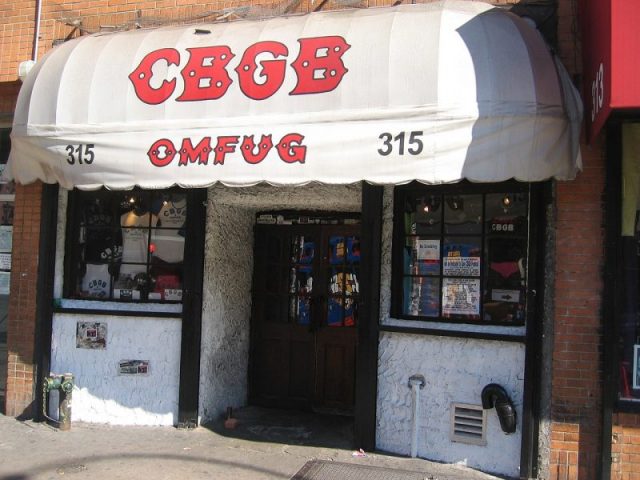
He spent a period of time in the Marines and attended music school in Philadelphia, then he moved to New York and got himself involved in all sorts of music, including singing in a choral group. But Hilly’s real forte was rooting out and booking acts for shows and concerts.
He helped to secure some of the most popular and influential groups of the day: Miles Davis, Led Zeppelin, the Doors, Ray Charles, young Bruce Springsteen, Frank Zappa…definitely an eclectic mix. Dealing with some very difficult and out-sized personalities prepared Hilly for what was to come — as did his Marine training.
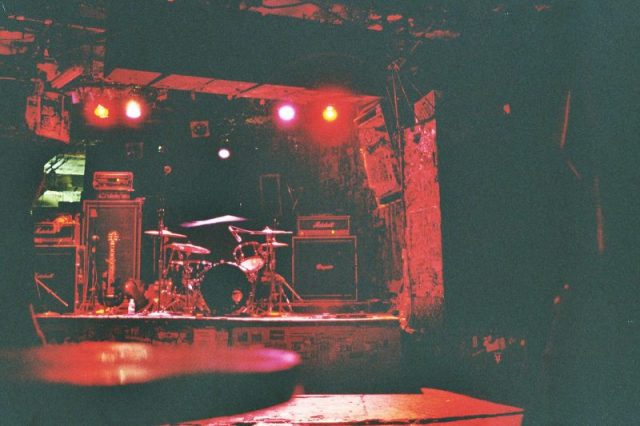
By 1973 rock and roll had, in many ways, become a formula. Later in the mid/late 70s, disco sprung out of it. In the eyes of many young people, popular music had become a polished business.
It had a formula for success which to many involved good looking people playing long songs about psychedelic nonsense. Disco was even worse – repetitive dance music with lyrics that repeated over and over again: “I love to love you, baby. I love to love you, baby. I love to love you, baby…”
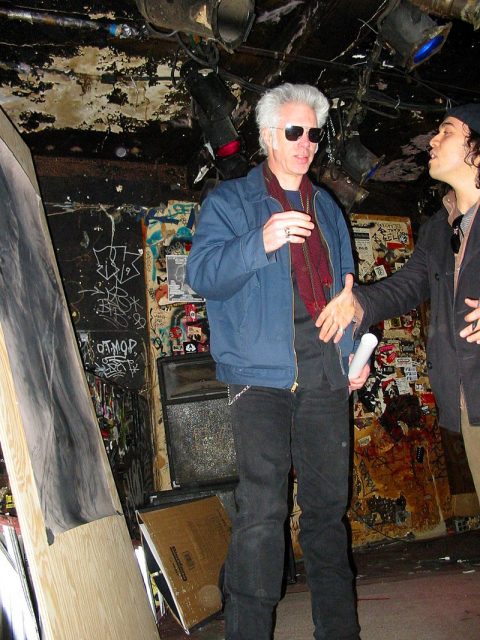
To many of the kids growing up in the post-Vietnam era, life was not about the war, “dropping out and tuning out,” “flower power,” or loving your neighbor. Life, especially in the inner cities, whether you were white, black or Hispanic, was gas lines, unemployment, junkies, limited dreams, corrupt government.
They didn’t want long-haired rock stars fresh out of their personal jets telling them what the world was about and how they should live their lives. Plus – rock songs had become too long. Six to eight minutes of rambling guitars, drum solos and more. It was time for “HARD, FAST and LOUD!”
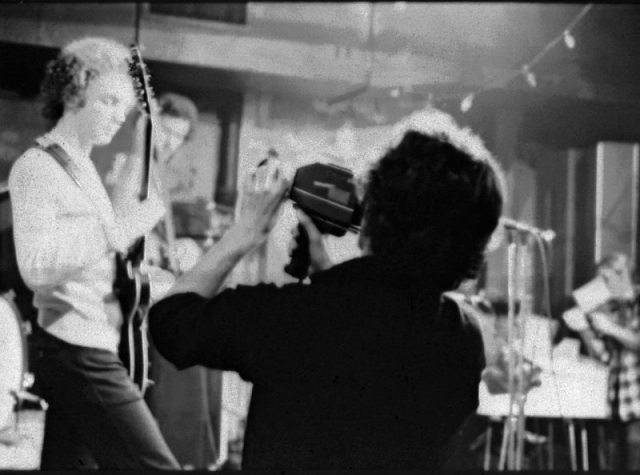
At first, Hilly didn’t know that. He was planning on opening a club where true music lovers could come to hear something different. “CBGB/omfug” stood for: “Country, BlueGrass, Blues/Other Music for Uplifting Gormandizers.” Of course, a “gourmand” is generally someone who loves food, but Hilly meant it for people who loved music.
It may strike you as kind of odd that someone would open a club in the Bowery for lovers of country, bluegrass and blues, but NYC is a metropolitan area and there are all sorts of music lovers out there. That was the logic. It was wrong. CBGB was in a really bad part of town, was completely run-down and easy to miss if you happened to be passing by in a car or a limo – which people were not.
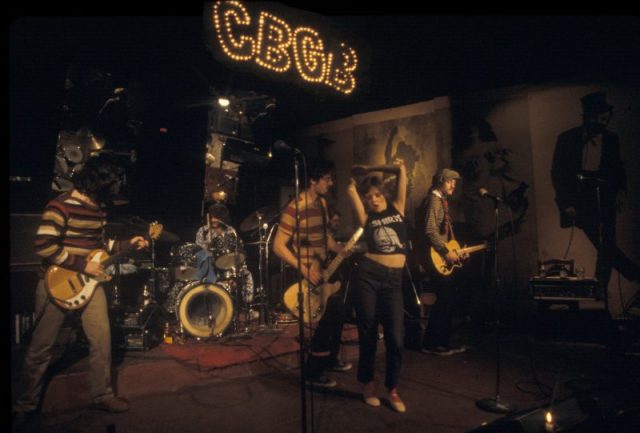
Soon, Hilly was staging open mic nights, and the people turning up…well, some of them had musical talent. One of the first bands to book a regular gig at CBGB was a group called Television, recognized by many as one of the acts to lay the groundwork for new wave and punk.
The lead singer went by the name Richard Hell (born Richard Lester Myers). Television helped to build the first stage at the club in return for a regular gig.
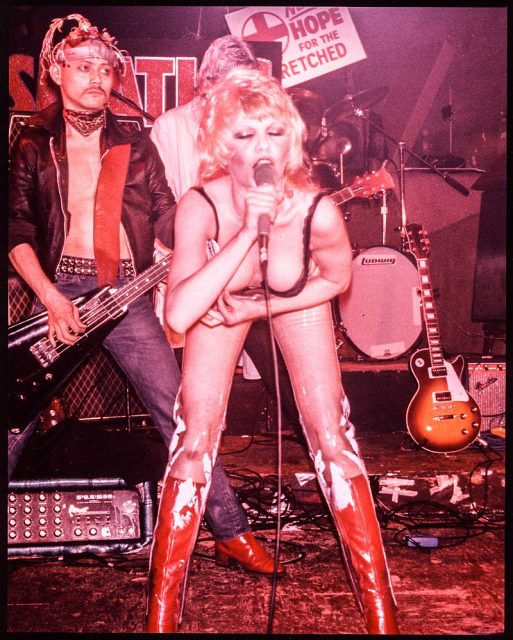
That was the beginning. Television did not play country, bluegrass or blues. Maybe their most notable “hit” was “Blank Generation,” which begins: “I was sayin’ let me out of here before I was even born.” Next thing you know, kids with a different sensibility from that which Hilly (or anyone else) was used to began to frequent the club, and he began to book their bands.
One of the things that Hilly was famous for was giving people a chance. One of the things that punk rock was known for was that a person/band didn’t have to be an accomplished musician or singer – they just had to feel strongly about what they were doing.
Acts that would never have been given a chance by anybody else had a shot at Hilly’s. It was at CBGB that the Ramones got their start. A bunch of kids from suburban New York, the Ramones took their name from the alias that Paul McCartney used when he first got started.
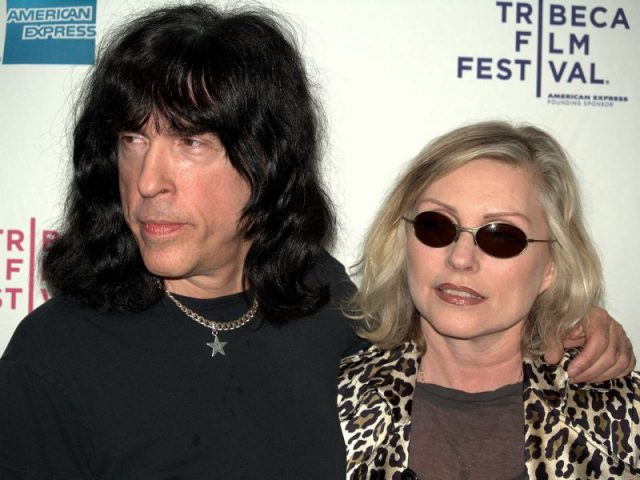
In the HBO movie CBGB (2013), the first meeting of Hilly (along with his side-kick Merv, who always wore a construction hat) and the Ramones is depicted.
The Ramones are waiting at the bar. Hilly asks Merv what their name is. “The Ramones…looks like they were raised under police lamps.” Hilly asks “What do you guys have for me?” Joey Ramone says “We got four songs: ‘I don’t wanna walk around with you’, ‘I don’t wanna be learned’, ‘I don’t wanna be tamed’, and ‘I don’t wanna go down to the basement’.” Hilly asks “…anything you wanna do?” Joely replies “We’re working on somethin’ now.” “Somethin’ positive?” Joey says, Yeah, it’s called “I Wanna sniff some glue,” to which Hilly replies, “Good to have a point of view.”
Punk Rock in America found its home at CBGB.
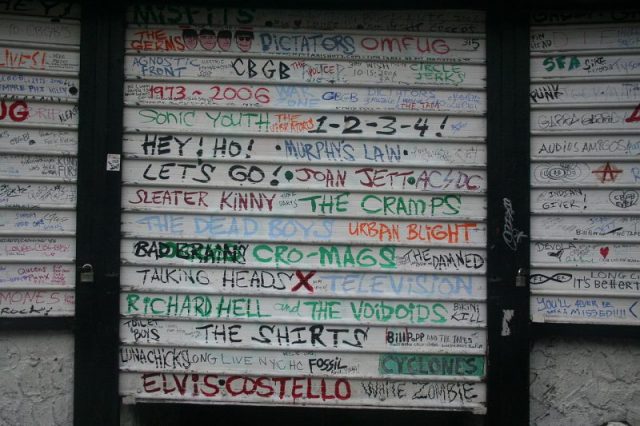
So did “New Wave.” As the club became more popular by word of mouth, and people in bands knew they had a good shot at getting some attention there, bands with formal training and musical talent found their way to the Bowery. The Talking Heads, Blondie, and others who would go on to success in the 1980s all got their real start there.
But, like most things, all good things must come to an end. By the mid 80s hardcore punk had taken over the underground scene, and while the early days did have lots of sex, drugs and rock and roll, many of the people who came to CBGB in the later years did so because they had heard about how “crazy” things were there – and they were determined to outdo those who had come before them.
A lot of important punk bands did play there, but by the late 1980s, the scene had degenerated, and CBGB’s “best” days were behind it, though it remained open until 2006, and hosted some of the great bands of the 90s.
In 2002, the Talking Heads were inducted into the Rock and Roll Hall of Fame. They brought Hilly onto the stage with them and credited him with giving them their first real break. Hilly died in 2007, one year after CBGB closed its doors.
